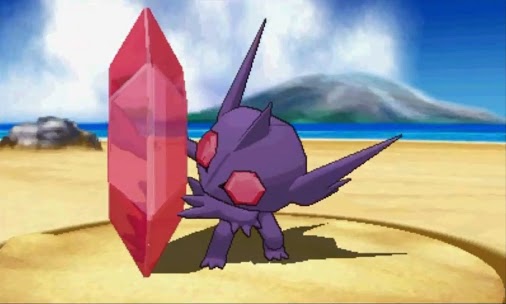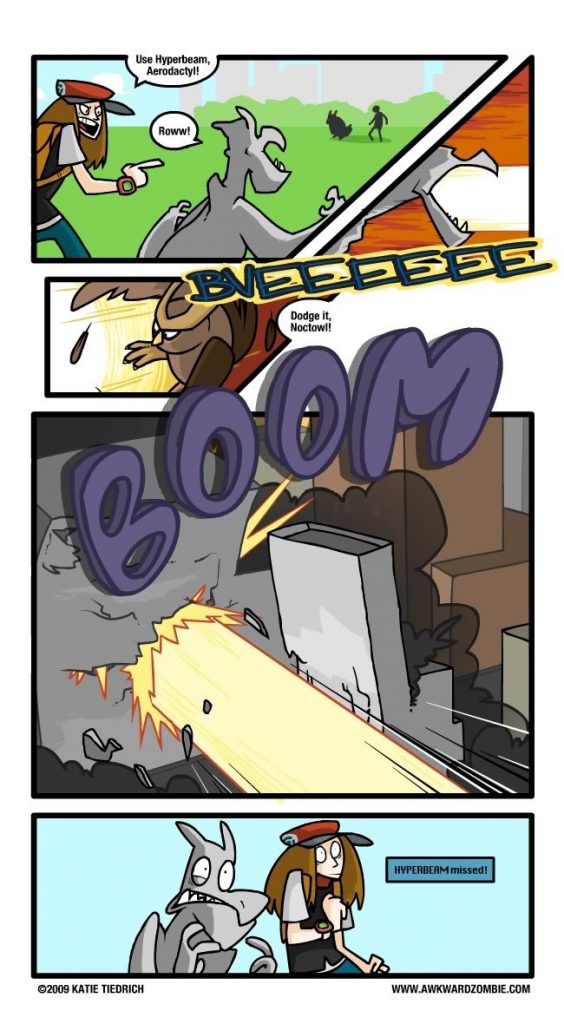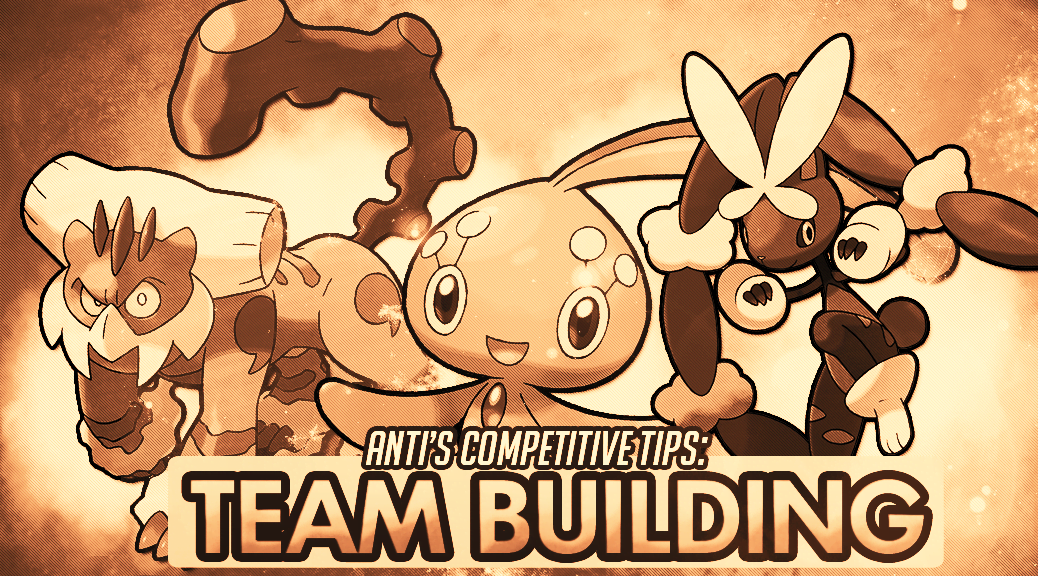Anti’s Competitive Battling Tips: Team-Building
In the first instalment of his Competitive Battling Tips series, Anti gives readers tips on how to improve their general approach to team building in the competitive game.
Hello! This article is the first in a series I will be doing on improving competitive battling skills. The advice I offer is not for beginners but for players with a rudimentary grasp of the competitive game who want to improve from adequacy to a more advanced understanding of the game. I will exclusively talk about the ORAS OverUsed (OU) tier, as it is the most popular competitive tier and the one I know best.
Team building is an especially mystifying aspect of competitive Pokémon for many players. The variety that characterizes OU initially seems freeing but also requires that builders account for that variety defensively, and with only 6 Pokémon available to do so, the task of building a defensively sound team that simultaneously executes an aggressive strategy can seem overwhelming. While this article will not offer a comprehensive guide to team-building, it will discuss several themes that separate mediocre teams from outstanding teams.
The only disclaimer I wish to offer is that this is general advice. There will be exceptions to some rules that I present, especially because much of it has been simplified for the sake of brevity and readability. I believe this is useful advice, but it is only advice. Follow your instincts.
Make sure your team is responsive to the metagame.
A team’s effectiveness is relative to its competition. The metagame—the sum of strategies used by players—dictates the effectiveness of a team. The metagame is constantly changing as players innovate new strategies and tactics to adapt to old ones, meaning that even the best teams can become ineffective as the metagame evolves.
The continual change of the metagame is evident when looking at both individual Pokemon and at larger stylistic trends. Early in ORAS, Manaphy rose to prominence when slower and more passive builds became popular in response to other threats like the nearly-banned Mega Metagross. In response, teams began to prepare for Manaphy more, either with more deliberate counterplay or by becoming stronger and faster, giving it fewer set-up opportunities. This is an oversimplification, but the fact remains that the metagame goes through cycles, and individual Pokémon—and even whole playstyles—see their effectiveness increase or decline depending on the metagame around them.
As a team builder, it is your job to identify what Pokémon, movesets, strategies, playstyles, etc. are effective in the current metagame and to build a team that best executes your idea. Every great team is anti-metagame to some extent.
In other words, great teams do not exist in a vacuum. Playing on the ladder or in tournaments is an excellent way to immerse oneself in the metagame. Also, resources like the weighted usage statistics and the replay threads for the major Smogon tournaments (Smogon Premier League, World Cup of Pokémon, etc.) provide snapshots of high-level play. It is important to use these resources to stay up to date.
Ignore filling roles like “physical sweeper” or “special wall.” Focus on synergy instead.
A common approach to team-building that beginners will take is to fill roles by including a physical sweeper, physical wall, special sweeper, special wall, support Pokémon, and a filler to round it out. This approach is useful in understanding how different Pokémon interact as a novice player gets their sea legs in competitive Pokémon, but any player with a grasp of the rudimentary elements of the game should move onto a more sophisticated approach.
The issue with filling roles is that it does not encourage actively forming a strategy. If I build a team with Landorus-T as my physical wall and Stealth Rock setter, Mega Charizard Y as my special sweeper, Bisharp as my physical breaker/sweeper, etc., I am not seriously thinking about how these Pokémon interact. Landorus-T invites Rotom-W in, and already that trio is ill-equipped to prevent it from being bothersome.

I modeled the preferred approach in the above tip about win conditions, but for the sake of this tip I will emphasize that an idea for a team can be as simple as “I haven’t used Mega Sableye, so I want to try a Mega Sableye semi-stall or balance.” The key is taking that idea and thinking how it can best be applied to put a wide variety of opponents on their heels. In this instance, pairing Mega Sableye with Volcarona (who appreciates Sableye’s hazard control) is an excellent start. From there, I might think that Volcarona’s checks are all vulnerable to hazards, so making a hazard-stacking and hazard-controlling team around Volcarona would be a great strategic thought. In terms of putting it into practice, that might require a breaker capable of softening up opposing Sableye stalls (like Choice Band Tyranitar) and then surrounding it with the necessary hazard core and some kind of Speed control. Perhaps Klefki could kill two birds with one stone. And so on.
While it is important to identify roles you need, there is no way to be cookie cutter about that. When team building, it is crucial that you work with the Pokémon themselves and not abstract “roles” that they supposedly fill. Team synergy has far too much nuance to be approached in any other way.
Make sure that your team is consistent, especially across play styles and accounting for the variety of those play styles.
Individual Pokémon have varied effectiveness across play styles. Mega Lopunny pressures frail teams since it can outspeed everything, but stalls, semi-stalls, and even balances can hard wall it. Mega Heracross is nearly impossible to switch into—let alone wall—but it is easily pressured and difficult to safely get into the match thanks to its low Speed. The purpose of a team is to build around Pokémon such that their strengths against certain strategies are supported and their weaknesses are made up for by other Pokémon. This is another way of stating that having multiple win conditions is important.
Consider the offensive core of Dragon Dance Mega Charizard X, SubSeed Serperior, and Tail Glow + 3 Attacks Manaphy. All three of these Pokémon can serve as win conditions against stall teams, allowing for some flexibility depending on what kind of stall my opponent brings.
Manaphy and Serperior pressure balances well depending on their defensive core. Against Lati@s, Manaphy can force Latios to sacrifice itself and kill it off with Ice Beam, opening up a Serperior sweep. When facing a Clefable + Heatran combination, Serperior can wear out Heatran with Leech Seed and Manaphy can pressure it until Charizard X can break through. These are very convoluted hypothetical match-ups, but the point is to illustrate how offensive consistency might work. The core seems the least consistent against fast offenses. Given that, team support would have to plan for that and be built to ensure the success of Charizard X or Serperior. Since none of the three Pokémon provide Speed control, the support would have to do that as a means of providing a path to victory against that play style while have the appropriate synergy with the win conditions.

Some players make the mistake of thinking that a win condition with a favorable match-up against a certain play style is a magical band-aid that all but guarantees a victory against that style. The language of this assumption shows up in common RMT phrases like “Mega Gardevoir covers stall.” It actually doesn’t. Mega Gardevoir has the ability to exert tremendous pressure on most stall builds, but like any win condition, it needs support to win. Stall teams will not collapse like a house of cards at the sight of their dreaded nemesis, Mega Gardevoir. Even a strong breaker like Gardevoir needs support from an offensive core to exert pressure on checks like Heatran, Chansey (if not running Taunt), and Jirachi. And you had better have a backup plan for match-ups against Weavile stall or any other match-up where Gardevoir can be Pursuit trapped. In other words, consistency is not about collecting Pokémon with favorable match-ups against different play styles and saying you cover everything. The synergy of your primary Pokémon and how cohesive their support Pokémon are will decide matches. Each Pokémon fills a role. Very rarely will you run into easy 6-0 opportunities.
One final aspect of consistency is move accuracy. This seems like a minor point, but anyone who has lost a game to misses from Stone Edge, High Jump Kick, Focus Blast, and even Draco Meteor can attest to how frustrating low-accuracy moves are. Whenever possible, use reliable Pokémon! They are objectively better than high-variance Pokémon, as they allow you to remove one variable (luck) from your in-battle planning as games progress. Luck elements like damage rolls and critical hits are unavoidable, but a team will be more consistent if the actual attacks it uses to deal damage are consistent. Over the course of many battles, teams with too many inaccurate Pokémon will lose more games that the reward of hitting is worth. You will not be able to entirely avoid these moves, but do your best. The hax gods will reward you.
Know which weaknesses are acceptable and which need to be fixed.
Every team has bad match-ups, an inevitability guaranteed by the restriction of six Pokémon slots to cover the vast expanse of usable Pokémon in OU. It is easy to fall into the trap of trying to over-correct a team’s weaknesses as they become apparent during testing.
First, if a Pokémon can beat you from Turn 1 or with extremely minimal support, you probably need to make changes. A lot of teams face this issue with Mega Pokémon, as they are by nature unique threats that are restrictive in the team building. Perhaps the best example of this is Mega Sableye, a Pokémon that can beat some teams almost by itself. It has very few hard checks because of its ability to spread burns and its impressive bulk and longevity. If you have no way of breaking Sableye or a Pokémon like it, you need to adjust your support and especially your offensive core so your team doesn’t auto-lose to Sableye stall.
Meanwhile, some weaknesses can be played around. If I am running an offense whose only Keldeo check is Latios, I am definitely Keldeo weak given the likelihood of Icy Wind or Pursuit support. However, if Latios is paired with Tornadus-T and Mega Diancie, the Keldeo weakness can be outmaneuvered by pressuring it with those faster Pokémon (thus punishing its presence) and, if necessary, switching something into a predicted resisted attack, even if an incorrect prediction might net Keldeo a kill. If there is a way to patch up this weakness without harming the function of the team, then that change should be made, but it is often impossible to do even that. In those cases, it is critical to understand the variability inherent to competitive Pokémon and to have a plan to ensure that these weaknesses do not dominate an individual battle.
In other words, having weaknesses that can be played around is acceptable, but once a weakness is severe enough that your opponent just has to make safe plays and will always win barring extreme hax, your team has a structural flaw.
Yes, you need to test your teams. Use the ladder to your advantage.
Even the most well thought-out theorymon cannot anticipate the hothouse of real battles. The ladder is an excellent resource for testing, as you will be exposed to a wide variety of Pokémon and strategies that will put your team to the test.
First, it is important to give yourself time to use your team and get used to how it functions. It is no different than learning to drive a new car: there is a learning curve even though you have the more general skill of driving. Do not overreact to early troubles with a team, as you are much more likely to misplay it as you continue to feel out its nuances.
It is boring but important advice: learning to use a team well takes time. You need to invest that time and be patient. If a loss troubles you, save the replay and examine how you could have played different to stop that outcome. If there was little you could do, then it might be worth examining if your team has a structural flaw. Even so, the above tip does not vanish: every team has weaknesses. It is up to you to decide how thin or wide you want your margin for error to be when playing. Besides avoiding match-ups that are simply unwinnable from Turn 1, there is no right or wrong approach to doing this.
Better players have a more mature understanding of the flow of games and thus have an easier time adjusting to teams. Top-level players can pick up a team and use it well from the first battle. You should not hold yourself to this standard, at least not until you are indeed at that level. Use each battle as a learning experience and be an active listener to your own battles. As your skills and your teams get better, this comes more naturally.
Finally, in terms of making laddering itself more fun, having an extra set of eyes to watch you play and to give you feedback can make the experience more enjoyable and more insightful. For those of you who dislike the rudeness of many ladder players (and the occasional posse), you can disable the chat at the beginning of every battle. Very few ladder players are such abominable human beings that they will PM you upon their obnoxious remarks being ignored.
Conclusion
I hope these tips were useful in guiding you toward a more rigorous approach to team building and ultimately to the competitive game as a whole. Like with any skill, the key to improving your team building ability is simply to practice building and testing teams. Finally, Part 2 of my team building tips can further hone these skills, so look forward to it!
Edited by bobandbill, Jake and wolf.
Cover image by champagnepapi.
